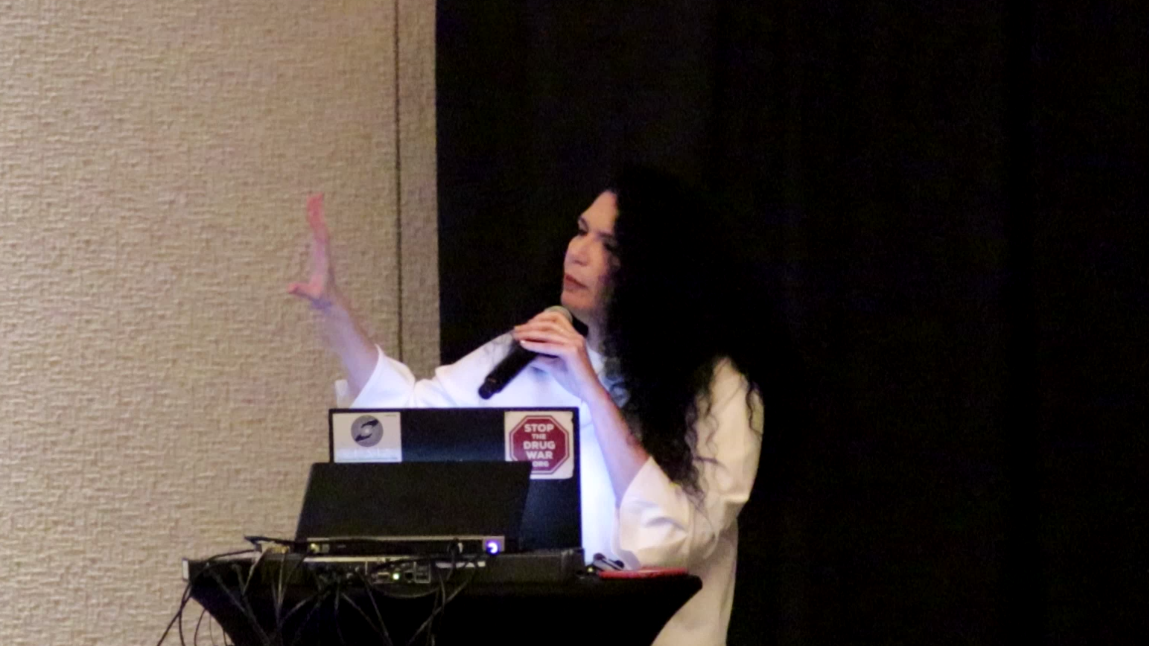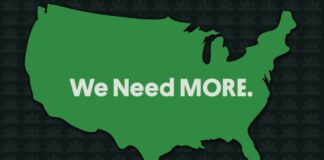
Sue Sisley might be the first person who’d never actually used cannabis but lost her job because of the plant.
Before 2018, when she medicated with THC oil to treat herself during a breast cancer scare, Sisley had only studied cannabis in the laboratory. While working as a clinical professor of psychology at the University of Arizona in Tucson in 2012, she secured approval for an unprecedented study into the effects of marijuana on veterans suffering from post-traumatic stress disorder (PTSD).
But unfortunately, as Sisley soon found out, her quest to secure funding for cannabis research didn’t end there. It took a year and a half before she had finally received her marijuana research materials from the government. Three months later, in June 2014, the university suddenly developed “funding and reorganizational issues” and Sisley found herself fired.
Her experience with cannabis research isn’t unique. Since the 1960s, it’s been nearly impossible to conduct scientific studies on the effects of cannabis unless they’re directly related to addiction or harmfulness.
Sisley traveled from her home in Arizona to Austin, Texas, to speak at South By Southwest (SXSW), an annual festival that fuses that latest film, music, tech and other subjects into a massive event. At the festival’s inaugural canna-business tract, which took place from March 14 to March 16, 2019, Sisley discussed the barriers that cannabis researchers still face to this day.
The Struggle to Conduct Proper Cannabis Research
It took Sisley seven years to finally acquire the license she needed to research cannabis. She placed an order for eight kilograms, which eventually arrived in a cooler of ice packs. It turns out that the cannabis had been frozen in a locker for years.
“This wasn’t fresh flower that had just been harvested, this was moldy cannabis that was sitting there in sandwich bags,” Sisley said.
The cannabis came from the University of Mississippi, the only facility in the U.S. that is licensed to grow the country’s federally regulated supply of cannabis since 1968.
U.S. Government cannabis crop at the University of Mississippi (Public Domain/Wikimedia Commons)
In many cases, the research difficulties begin when applying for a license from the Drug Enforcement Administration (DEA) to study cannabis. The agency categorizes cannabis as a Schedule I drug, which defines a substance as having no medical benefits and a high potential for abuse. As such, receiving a license is akin to a “golden ticket”. Without one, it’s impossible to procure cannabis from the federal government to use in clinical trials.
From Sisley’s experience with the stale product, it resembles what might be sold on the street in the ’60s. Despite the fact that the university receives a $6 million budget for marijuana production every five years, the batch she received from the university would not pass state testing in any regulated market.
The batch contained multiple strains, ground into powder supposedly to standardize the samples. It wasn’t only flower; the conglomeration of cannabis also included extraneous plant material: stems, sticks, and leaves. Even the THC and cannabidiol (CBD) levels were different from what Sisley’s team requested for their research, making it harder to properly control their experiments.
“Cannabis isn’t just one plant, there’s thousands of different ratios of THC, CBD, and terpene profiles. That’s not on the menu,” Sisley said. “What you get is a batch of high-THC or -CBD. You don’t know anything else about that cannabis.”
Beyond the poor quality, the government-issued marijuana had other defects that hindered the research process. Each batch came with a warning label stating that it had to be irradiated and sterilized before it was safe for patient consumption, so it didn’t even arrive in a usable state.
A Dawn for Cannabis Research?
Lack of accessibility and poor quality marijuana aren’t the only hurdles that cannabis researchers usually encounter. Studying other Schedule I drugs, such as heroin, requires permission from the DEA, Food and Drug Administration (FDA), and Institutional Review Board (IRB). The same goes for LSD or MDMA, or ecstasy. But cannabis requires two additional agencies to sign off: the National Institute on Drug Abuse (NIDA) and Public Health Service (PHS). Sisley’s Public Health Service review took a total of three years.
“The FDA has been a joy to work with, because they’re required to respond in 30 days. But these other agencies can take as long as they want, and that’s how they’ve systematically impeded cannabis research in this country,” Sisley said.
Video still of Sue Sisley speaking at SXSW 2019 (Mike Molda/Creative Minds AV)
She received her certification two days after the airing of a CNN special recounting her tribulations. She doesn’t see that as a coincidence. Fortunately for researchers, this is one barrier that others won’t have to face any longer. After much lobbying, this PHS review was eliminated right before former President Barack Obama left office.
Finding test subjects also proved to be a challenge. Sisley’s study targeted veterans suffering from PTSD, yet the Department of Veterans Affairs (VA) actively discouraged veterans from participating in any studies on cannabis, despite an epidemic of suicides which claimed the lives of 24,000 veterans in the three years while Sisley awaited her PHS review.
Other Perils
As if these barriers weren’t discouraging enough, researchers also take on a great personal risk even embarking down the path of cannabis research. Sisley’s own experience at the University of Arizona serves as a cautionary tale. Later during her trials, she lost the logistical backings of Johns Hopkins University in Baltimore for similar fears of negative funding repercussions from the United States government.
“Most physicians privately admit to you that they think this plant should be legal, but they’re afraid to talk about it,” Sisley said. Scientists that do soldier forward take on a much more substantial liability than their peers studying other substances. They’re required to sign forms accepting all liability. “Imagine why scientists don’t want to do this work. It’s insane. My attorney said I shouldn’t sign this, it’s ridiculous, but I couldn’t start the study without it,” Sisley said.
The odds may be stacked against cannabis researchers, but there’s a reason for them to be optimistic. The non-profit organization Doctors for Cannabis Regulation, formed by Sisley five years ago, has been lobbying government officials and trying to inform the medical community of the unfair challenges that are still faced by cannabis researchers. States are now increasing funding for studies, most notably in Colorado, which has allocated $10 million of surplus tax revenue towards grants, $2 million of which Sisley used to fund her veteran PTSD study.
“You’re going to see data coming in the next couple years about cannabis for pediatric brain tumors, for Crohn’s disease, for insomnia,” Sisley said. “All these studies are coming to completion now, we’re really grateful.”











